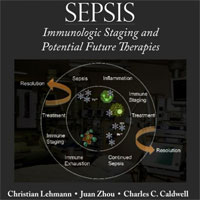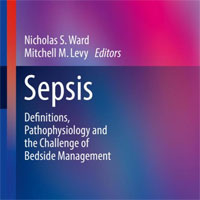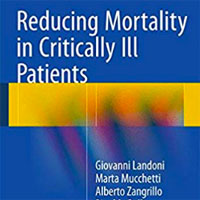Tag: transfusion
Early Noninvasive Ventilation and Nonroutine Transfusion for Acute Chest Syndrome in Sickle Cell Disease in Children
Early noninvasive ventilation combined with nonroutine transfusion is well tolerated in acute chest syndrome in children and may spare transfusion in some patients. Early recognition of patients still requiring transfusion... read more
Emergency Management of Intracerebral Hemorrhage – The Golden Hour
There is a kind of self-fulfilling prognostic pessimism when it comes to Intracerebral Hemorrhage. And this pessimism sometimes leads to less than optimal care in patients who otherwise might have had a reasonably good outcome... read more
Targeting Transfusion-Related Acute Lung Injury
We propose that the most promising therapeutic strategies to explore are interleukin-10 therapy, down-modulating C-reactive protein levels, targeting reactive oxygen species, or blocking the interleukin-8 receptors; all focused... read more
Age of Red Cells for Transfusion and Outcomes in Critically Ill Adults
The age of transfused red cells did not affect 90-day mortality among critically ill adults. In an international, multicenter, randomized, double-blind trial, we assigned critically ill adults to receive either the freshest... read more
Should Transfusion Trigger Thresholds Differ for Critical Care vs Perioperative Patients?
The safety of restrictive transfusion strategies likely differs for critically ill patients versus perioperative patients. Further trials investigating transfusion strategies in the perioperative setting are necessary. The... read more
The Relationship between Clinical Experience and Quality of Health Care
Physicians with more experience are generally believed to have accumulated knowledge and skills during years in practice and therefore to deliver high-quality care. However, evidence suggests that there is an inverse relationship... read more
Restrictive or Liberal Red-Cell Transfusion for Cardiac Surgery
In patients undergoing cardiac surgery who were at moderate-to-high risk for death, a restrictive strategy regarding red-cell transfusion was noninferior to a liberal strategy with respect to the composite outcome of death... read more
Promoting High-Value Practice by Reducing Unnecessary Transfusions With a Patient Blood Management Program
Although blood transfusion is a lifesaving therapy for some patients, transfusion has been named 1 of the top 5 overused procedures in US hospitals. As unnecessary transfusions only increase risk and cost without providing... read more
Definitive Global Transfusion Study Supports Patient Safety and Outcomes
Lower thresholds for blood transfusions during cardiac surgery have proven to be safe and provide good patient outcomes compared to traditional thresholds, according to the largest research study ever performed in this area.... read more
Can we stop worrying about the age of blood?
Blood transfusions are common in critically ill patients; two in five adults admitted to an ICU receive at least one transfusion during their hospitalization. Recently, there has been growing concern about the potential dangers... read more
Should Transfusions Be Matched by Sex?
In the first large study to look at how blood transfusions from previously pregnant women affect recipients' health, researchers discovered men under 50 were 1.5 times more likely to die in the three years following a transfusion... read more
Hyperfibrinolysis in Severe Isolated TBI May Occur Without Tissue Hypoperfusion
Hyperfibrinolysis is associated with tissue injury in both patients with traumatic brain injury (TBI) and in non-TBI patients. However, tissue hypoperfusion is associated with hyperfibrinolysis in non-TBI patients, but not... read more
Should All Massively Transfused Patients Be Treated Equally?
Although balanced resuscitation has become integrated into massive transfusion practice, there is a paucity of evidence supporting the delivery of high ratios of plasma and platelet to RBCs in the nontrauma setting. This... read more
Thrombolytics for Stroke: The Evidence
Thrombolytics for stroke: undoubtedly the biggest controversy in emergency medicine. Also, the topic of this week’s Emergency Medicine Cases Journal Jam podcast. Rory Spiegel, Anton Helman, and I take a deep dive into the... read more
Evaluating Transfusion Strategies
Cancer patients are at increased risk of septic shock. Therefore, Bergamin et al set out to assess whether a restrictive strategy of red blood cell (RBC) transfusion reduces 28-day mortality when compared with a liberal strategy... read more
CDC and Prevention Guideline for the Prevention of Surgical Site Infection
This guideline is intended to provide new and updated evidence-based recommendations for the prevention of SSI and should be incorporated into comprehensive surgical quality improvement programs to improve patient safety.... read more
Systemic and Microcirculatory Effects of Blood Transfusion in Experimental Hemorrhagic Shock
The microvascular reperfusion injury after retransfusion has not been completely characterized. Specifically, the question of heterogeneity among different microvascular beds needs to be addressed. In addition, the identification... read more
Ratio-based Transfusion and Non-trauma Patients
Researchers at Massachusetts General Hospital (MGH) urge caution in adopting ratio-based transfusion - a practice previously studied only in patients with severe traumatic injuries - in non-trauma patients. Their study published... read more
Association of Ratio-Based Massive Transfusion With Survival Among Patients Without Trauma
Association Between Ratio of Fresh Frozen Plasma to Red Blood Cells During Massive Transfusion and Survival Among Patients Without Traumatic Injury. This study reports on the use and benefits of ratio-based blood product... read more
Transfusion in Critical Care – UK Regional Audit of Current Practice
A consistent message within critical care publications has been that a restrictive transfusion strategy is non-inferior, and possibly superior, to a liberal strategy for stable, non-bleeding critically ill patients. Translation... read more
Critical Care Patients Benefit From Restrictive Transfusion Strategy
Although a restrictive transfusion strategy significantly reduces the risk for 30-day all-cause mortality in critical care patients, its benefits are less clear in perioperative patients, according to a meta-analysis by a... read more
Impact of transfusion on patients with sepsis admitted in ICU
Red blood cell transfusion (RBCT) threshold in patients with sepsis remains a matter of controversy. A threshold of 7 g/dL for stabilized patients with sepsis is commonly proposed, although debated. The aim of the study was... read more









